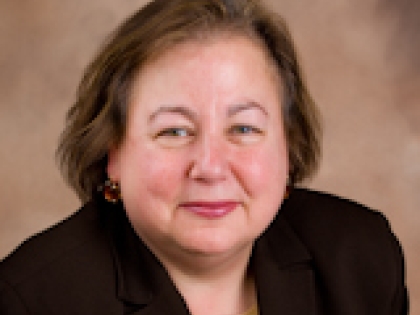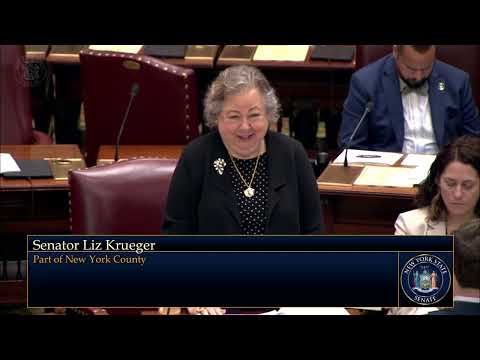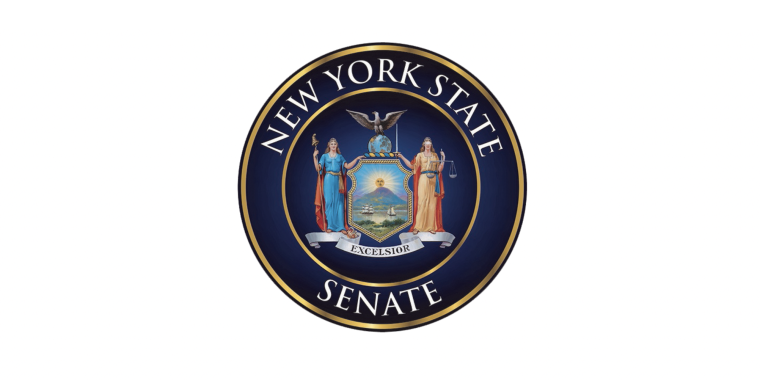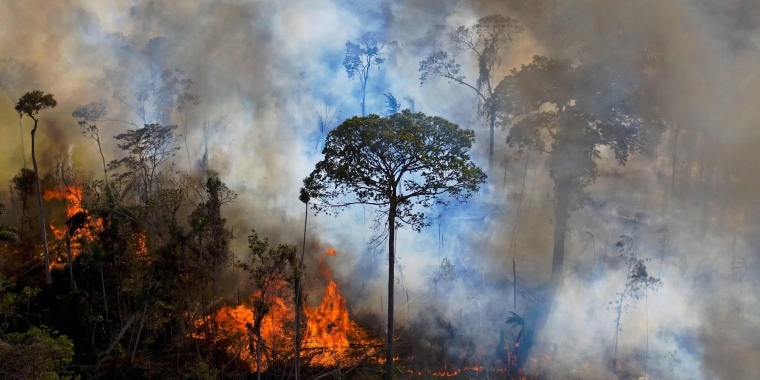
Testimony Before The Public Service Commission Regarding The Draft Generic Environmental Impact Statement For The Con Ed/Waterside Site on September 26, 2002
Liz Krueger
July 12, 2010
My name is Liz Krueger and I am the State Senator for the district in which the Con Edison Waterside site is situated. The residents of this neighborhood are faced with a potential development that is unprecedented in its magnitude and range of possible impacts on the community, and it is essential that you take the legitimate concerns of my constituents into account when evaluating the sale of this land.
Over the past fifty years, a number of forces have significantly altered the relationship of the City to its shoreline. For most of New York’s history, the waterfront was the locus for industrial and commercial development, and, although functional, the Con Edison plant is a relic of this era. In the post-industrial city, we have an opportunity to reclaim the waterfront for purposes that address the civic and social needs of our community. The Waterside site offers the rare chance to create an exceptional project that is connected to both the City and the river--that addresses the needs for housing, open space, and waterfront access.
Unfortunately, with these massive opportunities there is the potential to make colossal mistakes. As I will argue in this testimony, overdevelopment runs the risk of negatively impacting traffic, open space, and school capacity, while casting shadows and aesthetically disrupting our visual resources.
As the purpose of this hearing is to ensure that public input is incorporated into this process, I want to remind you that under § 70 of the Public Service Law, the PSC cannot approve the sale of the land unless it has been shown that it is in the public interest. It is imperative that the PSC think beyond the impact of the sale on consumer rates when evaluating the public interest. It must be guided by sound planning principles while considering the impacts of such a large-scale development on the surrounding community.
After months of examination, I have concluded that the DGEIS is inadequate in several areas—often failing to suggest realistic mitigation measures while placing unreasonable burdens on city resources. Both the findings and the failures of the DGEIS indicate that a FAR of 12 is simply too big, and that the proposed heights are inconsistent with other buildings in the neighborhood and intrusive to the skyline. I would like to elaborate on my specific concerns.
Traffic
According to the DGEIS, the proposed development could bring up to 16,000 people into the neighborhood each day, while providing parking for 2,600 vehicles. While the DGEIS admits that the project would significantly increase traffic volumes, the traffic impacts were not analyzed for the Queens Midtown Tunnel and the FDR Drive. Traffic entering the Queens Midtown Tunnel has long-tormented residents of Murray Hill, and many fear that traffic conditions are going to worsen with the recently approved building to be erected on 36th Street and 2nd Avenue. The DGEIS deems this intersection to be "unmitigatable," and fails to analyze the impact on traffic in the tunnel itself. This seems like a serious oversight. Also, if we consider that overflow of traffic on the FDR Drive could end up on First or Second Avenues, it is problematic that a traffic analysis is missing.
However, I am most alarmed by the DGEIS’ argument that all traffic impacts in the area can be mitigated through a series of generic solutions which the developer has little control over: signal phasing/timing changes, parking regulation changes, pavement markings and signage modifications, and enforcement of traffic and parking regulations. These are not adequate mitigation measures for a development of this size and should not be accepted by the PSC. Ultimately, the traffic analysis raises serious issues with the proposed size of the project. In addition, it is important to remember that increased traffic could have adverse impacts on the noise levels and air quality in the neighborhood.
Open Space
The neighborhood surrounding Waterside is notoriously underserved in terms of open space, and this development could potentially worsen an already grim situation. The DGEIS states that the developer will include 3.3 acres of public open space if the development reaches a FAR of 12. Aside from using the community’s desperate need for open space as an impetus for larger development, 3.3 more acres does not nearly address the larger dearth of open space in the area. For Con Edison and FSM to make a good faith effort to address this issue, they will have to explore the various compelling opportunities for off-site open space, such as expanding the esplanade along the river and creating easements providing public access to the East River.
As reported in the New York Times last Friday, it is very possible that the United Nations will be constructing a building where Robert Moses Park is currently situated. This is information that the Final EIS must take into account—further emphasizing the need for open space to be provided for the people in this neighborhood.
Schools
The DGEIS admits that the number of additional students generated by a large-scale development would exceed the currently projected capacity of the elementary schools in the area, especially PS 116. The DGEIS offers several suggestions for mitigation, but only one compelling solution: the construction of a new school is clearly the most sensible option. Community School District 2 and New Visions for Public Schools have already created a draft proposal for a K through 3 school that would focus on early childhood literacy. The PSC should consider school construction as a condition to the sale of the land.
Size, Heights, and Shadows
There are a number of measures that must be taken in order for the development to be consistent with the character of the neighborhood—some of which conflict with the plans set forth in the DGEIS.
- Once again, the proposed density of 12 FAR is too big. Aside from the reasons I have already stated, a development of this density is out of character with the surrounding neighborhood, and would place an enormous burden of various city agencies, including the Police and Fire Departments, particularly given the security issues raised by the proximity of this site to the United Nations.
- The heights of the new buildings should be limited to 400’, with a 280’ height limit for the parcel at 685 First Avenue. According to the EIS itself, the proposed 700’ and 800’ buildings would cast shadows on the Tudor City open spaces and the Atrium during winter months. Limiting the heights of the buildings would avoid these problems, while retaining the prominence of the Secretariat on the East Side skyline.
- It is important for 39th and 40th Streets to be mapped as city streets, and for easements to be provided across the FDR. This would maintain the pattern of blocks and streets and prevent the development of a harmful superblock.
Energy Resources
When I attended the last informational session held by the PSC regarding the Con Ed Waterside site, I asked the panel how the sale of this land could be justified in the context of New York’s need for more electric generating capacity, and whether this development could be serviced. I was assured that the energy supply systems could meet the demands of the project without an impact, and that the local delivery equipment is adequate for these demands. Two days later, the 14th Street transformer caught fire and 63,000 homes and businesses lost their power. Consequently, I feel compelled to raise this issue again, and add that a well-managed electrical system must provide for such contingencies.
This project represents an opportunity for enlightened development that provides our community with housing, open space, and access to the waterfront. I strongly encourage the PSC to attach conditions to the disposition of this land that protects the community from overdevelopment, and to withhold a portion of the disposition proceeds to pay for mitigation measures.
On behalf of the community and my office, I would like to thank Community Board 6, the East Midtown Coalition for Sensible Development, and their consultants, Buckhurst, Fish & Jacquemert, for their comprehensive and cogent analysis they have completed on the DGEIS. I would also like to thank the PSC for the opportunity to testify here today.
Share this Article or Press Release
Newsroom
Go to NewsroomTREES Act Passes Both Houses Of The Legislature
May 16, 2024



